10 Laboratory Safety Training Courses
We’ve curated a list of lab safety training courses to help your workers mitigate risks and hazards when working with chemicals, toxins, and pathogens. The list includes proper handling of chemicals, hazard communication, pathogens, fire prevention, and more. Check out the courses below.
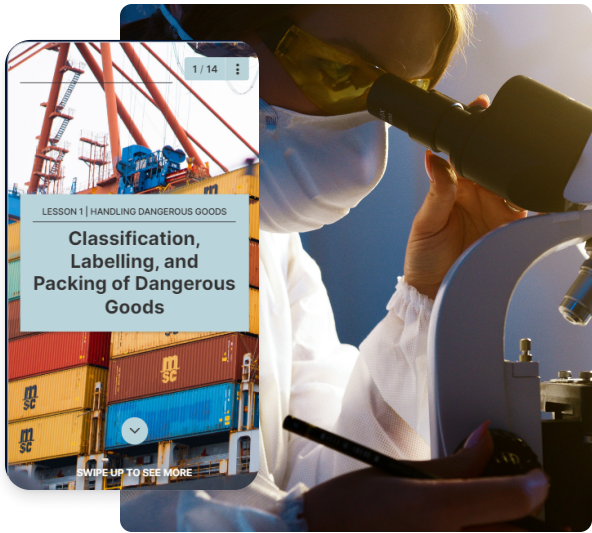

1. Chemical Storage and Handling
The Chemical Storage and Handling course by EdApp was created to prevent accidents in workplaces that work with hazardous chemicals. This occupational safety training course kicks off with guidelines on minimizing chances of hazardous chemical exposures and proper procedures to follow in cases of emergency. Then, it provides basic knowledge about identifying key safety information from a Safety Data Sheet (SDS) and understanding the importance of safe chemical storage, transportation, and waste management, which are all crucial in preventing accidents in the workplace. Although specifically focused on chemicals, lessons from this course are helpful for fire safety training.
As a remote work software, EdApp uses mobile learning solutions for this course, making it easily accessible for employees who don’t have immediate access to desktops and barely have enough time to spare for long training sessions.
Scope:
- Working safely with chemicals
- Understanding safety Data Sheet (SDS) Requirements
- Safe storage and transportation
Cost: Free
Created by EdApp
Explore the course
2. Toxic Chemicals
Toxic chemicals pose a range of health and environmental risks, so it's critical for GHS-compliant companies and chemical manufacturers to ensure that their workers know the severity of risks associated with each chemical they handle. In this lab safety training course by EdApp, your team will learn more about related toxicology terminologies, various types of toxins, and how they differ from each other. This information comes in handy when identifying hazard classes and categories of your chemical products and classifying or labeling them under the GHS standards. They will also learn how the trace of toxic chemicals can enter their body alongside some tips on how they can prevent them.
Through EdApp’s powerful authoring tool, you can edit, rebrand, and deploy this course directly to your workers’ mobile device in just a few easy clicks.
Scope:
- Types of toxins
- Toxicology terminologies
- Routes of exposure
- Workplace exposure standards
Cost: Free
Created by EdApp
Explore the course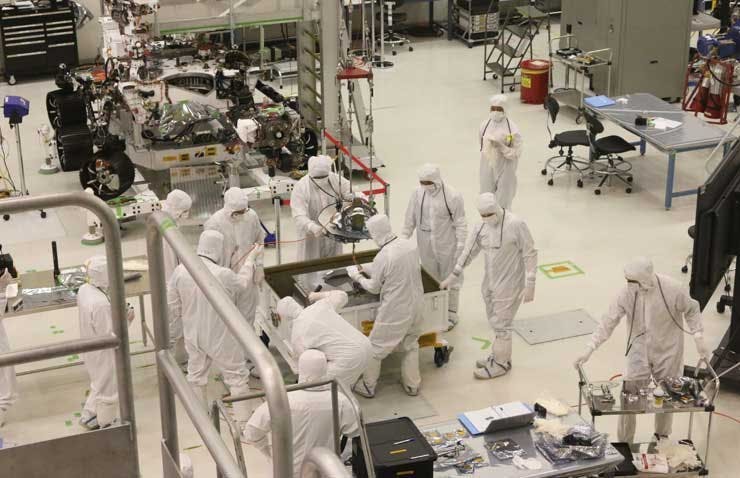
3. Hazard Communication
EdApp’s Hazard Communication course focuses on educating your workforce about the different hazards surrounding a chemical. Here, they will learn more about the physical, health, and environmental hazards associated with these harmful substances, when and how toxicity in a substance occur, and the steps your team can take to eliminate or at least reduce these risks. As they progress through these lessons, they will also gain a thorough understanding of the components of GHS-compliant chemical labels and safety data sheets. This way, they can easily identify the hazards of the chemical products they will be working with as well as the best practices to avoid accidental exposure or any related incidents.
This lab safety training course only contains 11 short but highly concentrated slides that your team can complete in just 5-10 minutes. If you have remote employees all over the world, you can also use EdApp's AI translation tool to translate it into different languages, like Spanish, Japanese, or Arabic.
Scope:
- Different types of chemical hazards
- How and when they occur
- Steps to eliminate or reduce them
- Elements of GHS-compliant chemical labels and safety data sheets
Cost: Free
Created by EdApp
Explore the course
4. Chemical Safety; Fires and Explosions
Available in Alison, Chemical Safety; Fires and Explosions is a lab safety training course that provides practical knowledge of preventing and dealing with fires and explosions. Its introductory module delves into the characteristics of flammable materials, classifications of explosions, and types of fire extinguishers. The second module discusses fire emergency action plans and further teaches learners about recognizing the appropriate fire extinguishers for the different types of fires. It also includes various design strategies to prevent fires and explosive incidents.
At the end of the course, your learners can check their knowledge and understanding with an assessment test, with a required minimum score of 80 percent for successful course completion. While the course is available for free, official certificates are only available for purchase.
Scope:
- Introduction to fire and explosions
- Prevention of fire and explosions
- Fire emergency action plans
Cost: Free
Created by Alison
Explore the course
5. Course Laboratory Safety
The Course Laboratory Safety course by OSHAcademy focuses on eliminating hazards when working with chemicals, which is an important part of the fire safety training of chemical laboratory workers. This course provides awareness of the different chemical hazards in the laboratory, including preventive safety measures. The course modules and practice quizzes are free. However, certification is only available for purchase and can only be earned by achieving a passing score in the (open-book) final exam.
Scope:
- Controlling laboratory hazards
- Chemical hazards in the laboratory
- Physical hazards
Cost: Free (without certification), $15.99 USD - $27.99 USD (with certification)
Created by OSHAcademy
Explore the courseExplore our library including lab safety training courses
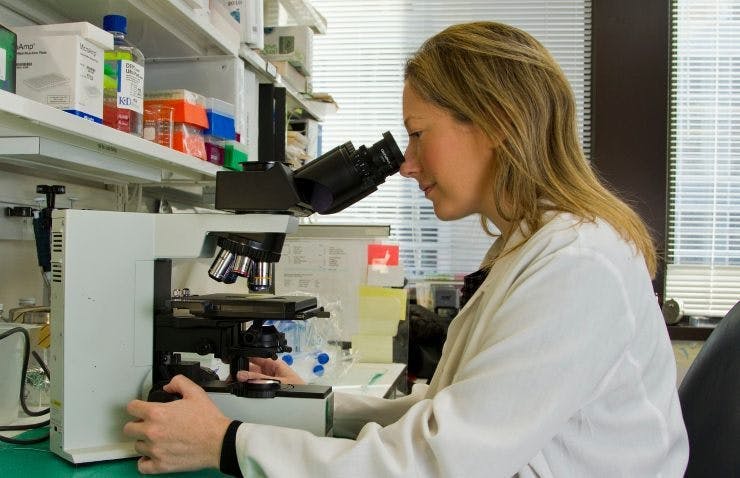
6. Bloodborne Pathogens
Lab workers who are frequently exposed to blood and other bodily fluids are at a higher risk of contracting bloodborne infections. One way to reduce the hazards of becoming infected is understanding how bloodborne pathogens work, which is discussed in the Bloodborne Pathogens course by EdApp. It also provides key steps for staying safe when working with needles, scalpels, broken glass, and more contaminated sharps that may penetrate your skin. As you progress through the course, you will also learn about potential exposure incidents and what to do if you have been infected.
To maximize learner participation and retention, make use of EdApp’s powerful features, such as gamification, spaced repetition, and free authoring. The content has also been broken down into four digestible sections that anyone can finish in just a few minutes.
Scope:
- Handling contaminated sharps
- Hepatitis B vaccination protection
- Exposure incidents
- Personal protective equipment (PPE)
Cost: Free
Created by EdApp
Explore the course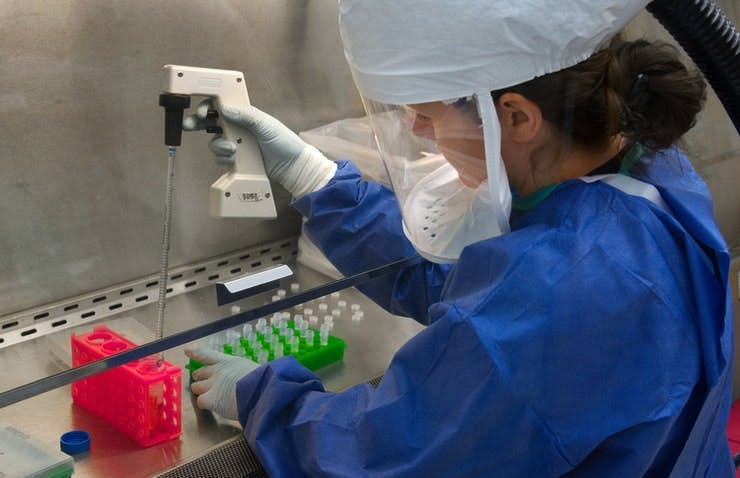
7. Globally Harmonized System (GHS)
GHS, which stands for the “Globally Harmonized System of Classification and Labeling of Chemicals”, is a system that defines and classifies chemical hazards and communicates safety measures through labels and Safety Data Sheets (SDS). This system was developed by experts from the United Nations to standardize hazard classifications and chemical handling processes all over the world. EdApp’s Globally Harmonized System (GHS) course delves into a quick background of GHS, hazard classification, hazard communication, and proper GHS application and implementation. As your workers go through the lessons, they’ll also be able to learn about the proper steps in classifying hazards and understand the differences between chemical substances, mixtures, and alloys.
The microlearning approach of this training software’s lessons makes key information more digestible, which helps improve employees’ knowledge retention.
Scope:
- Introduction to GHS
- Application and Implementation
- Hazard Classification
- Hazard Communication
Cost: Free
Created by EdApp
Explore the course
8. Bloodborne Pathogens (BBP) for Researchers
The University of Washington developed this course on bloodborne pathogens for researchers who need to work with potentially infectious materials daily. It covers a range of topics that will increase your knowledge about bloodborne pathogens, like their health hazards and modes of transmission. Upon course completion, expect to learn more about working safely with sharp objects, preventing exposure incidents, responding to potential contamination, and cleaning infected blood spills. It also explains the vital importance of taking a Hepatitis B Vaccine, which is especially necessary for researchers like you who are exposed regularly to the risk of bloodborne pathogens.
Scope:
- Hazards of bloodborne pathogens
- How pathogens are transmitted
- Exposure prevention
- Incident response and cleanup
- Information on Hepatitis B Vaccine
Cost: Free
Created by University of Washington
Explore the course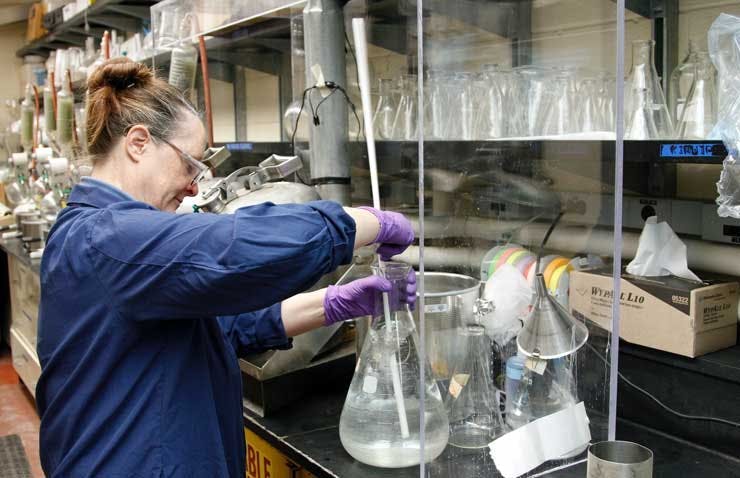
9. Hazard Communication
The Hazard Communication course by eSafety dives into how hazard communication works, its regulatory systems, and its alignment with the GHS. What’s great about this course is that it was recently updated to include the regulation changes that OSHA put in place in 2012, which can be found in the OSHA standard 1910.1200. Through this comprehensive course, you’ll learn about specific topics like fire and explosion hazards, reactivity of materials, corrosive substances, toxicological information, protective equipment, fire-fighting measures, and first-aid measures. Overall, the lessons aim to increase your knowledge regarding chemical hazards, classification systems, and basic protection methods to ensure the safe handling of chemicals.
While this is a great course that includes comprehensive lessons, it is only accessible via eSafety’s paid training library.
Scope:
- Introduction to hazard communication
- Health hazards
- Fire and explosion hazards
- Labeling
Cost: Price upon quote request
Created by eSafety
Explore the course
10. GHS and Hazardous Communication
Designed by 360training, the GHS and OSHA Hazardous Communication course contain general information about hazard communication standards and chemical hazard prevention methods used by workers in the construction, automotive, manufacturing, pharmaceutical, and healthcare industries. Some of the topics covered in this 1-hour online course include the Globally Harmonized System, hazardous materials, labels, safety data sheets, hazard controls, and HAZCOM terminology. While this course isn’t free, it’s been created specifically for easy self-paced learning. You can also look forward to other perks like being able to save progress as you go and 24/7 access to 360training’s customer support.
Scope:
- Hazard Communication Standard
- Globally Harmonized System (GHS)
- Safety Data Sheet (SDS)
- Controlling Physical and Health Hazards
Cost: Starts at $20 USD
Created by 360 Training
Explore the courseMitigate laboratory hazards with lab safety training courses
Deploying lab safety training courses for your workers is an efficient way of creating a safe laboratory environment for your employees. This is not just a significant part of the onboarding training for new hires. It’s equally important to reinforce these key concepts on safety among existing employees to help them maintain compliance and keep up with changes in safety protocols. It also helps prevent unwanted incidents, like chemical spill and inhalation, and ensure that they have sufficient knowledge in dealing with risks and hazards. By providing lab safety training for your employees, you’re able to empower them with vital information in working at high-risk workplaces such as laboratories. You can also equip them with an action plan and preventive safety measures.
